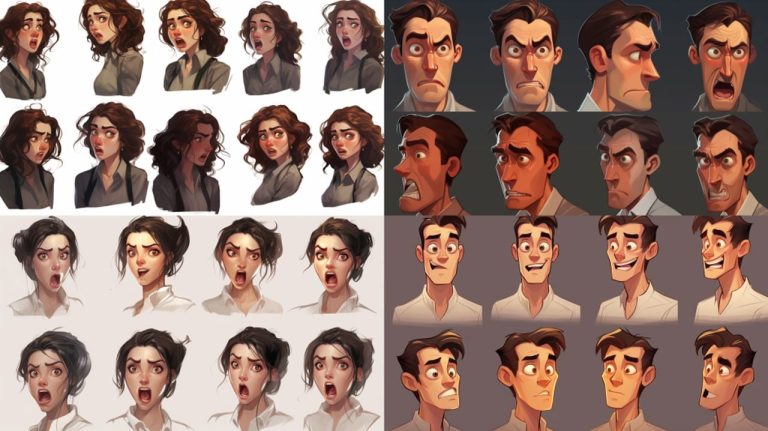Since its availability OpenAI’s DallE 3 AI image generator has taken the world by storm providing an alternative to more established AI art creation services such as Midjourney, Stable Diffusion and others. If you need to create a series of images with consistent characters you might be pleased to know that this is possible in DallE 3. Although there are a number of different directions you can take depending on your needs and styles required. This quick guide will provide more information on how to use ChatGPT ‘s custom instructions to craft consistent characters within the DallE 3 platform. As well as how you can use variables combined with custom instructions to create engaging narratives using consistent characters.
Using variables with DallE 3
The use of variables is a key component in the creation of consistent characters in DallE 3. These variables enable the establishment of specific character traits that persist throughout the narrative, thereby providing a sense of continuity and coherence. This consistency is a vital element in the creation of believable characters that can truly connect with the audience.
Earlier methods of creating trying consistent characters has now been refined in DallE 3 providing much more refined results, thanks to custom instruction prompting. This method of creation has been showcased by YouTuber Gilbatree and more recently the Quick Start Creative channel below. Providing instruction on how you can easily create consistent characters using DallE 3. This revised method allows for more control over the character creation process, leading to more consistent and accurate results from DallE 3.
DallE 3 consistent character creation guide
Other articles you may find of interest on the subject of OpenAI’s DallE 3 AI art generator :
Custom instructions are a powerful tool in DallE 3. They allow users to provide a background and output description, essentially giving DallE 3 rules for output. This feature can be used to guide the tool in creating characters that align with the user’s vision. For instance you can use custom instructions to create a comic with a Western modern style, featuring an consistent as the main character. The use of custom instructions in DallE 3 also allows for the conversion of character descriptions into a comic style. This involves adapting the instructions to suit the specific needs of the comic characters you are trying to create.
When introducing characters in DallE 3, it can be beneficial to be less descriptive initially. This allows for more variety in their positioning, which can add depth and dynamism to the story. As the story progresses, more detailed descriptions can be used to further develop the characters. Having a clear vision for the project is crucial when using DallE 3. This vision guides the use of custom instructions and helps maintain consistency in the characters and the story. However, the process is not perfect and may require additional editing in software like Photoshop or Illustrator. But as OpenAI keeps refining its AI art generation technology and AI models you can expect the process to become easier and easier over time.
Applications of consistent characters
Being able to create consistent characters with an AI art generator is a fantastic skill to learn and can be applied in a wide variety of ways. Here are just a few examples of how you can use your newly acquired skill.
Book Design and Publishing
If you’re an aspiring author or a self-publisher, consistent and appealing character designs can add a new dimension to your work. You could use these characters in cover designs, illustrations, or even in promotional materials. This can elevate the overall aesthetic of your book and make it more marketable.
Animation and Filmmaking
Creating an animated short or feature film traditionally requires a huge team of artists and animators. With an AI generator, you can maintain character consistency across different scenes and expressions, drastically reducing the time and human resources needed. This could enable more individuals to venture into animation.
Game Design
For indie game developers, character design can be a significant bottleneck. Using AI to generate consistent and versatile characters can speed up the development process and allow for more focus on gameplay mechanics, story, and other crucial aspects of game design.
Marketing and Branding
If you’re looking to build a personal brand or even a small business, consistent characters can become mascots or representatives. These can be used in various promotional materials across different platforms, offering a unified and instantly recognizable brand image.
Creative Exploration
For artists and creatives, an AI art generator can be a tool for exploration. You can test out different styles, forms, and expressions quickly, allowing for a more rapid iteration and evolution of your creative ideas.
Fan Art and Community Building
Consistent character designs can also be beneficial for fan communities. If you’re a fan artist, you can generate multiple forms of a beloved character quickly, contributing to fan projects or even creating your own derivative works with ease.
Using custom instructions to create consistent characters in DallE 3 is a slightly tricky but rewarding process when creating consistent characters. Although before you start it’s best to have a clear vision, and apply careful use of variables and custom instructions, together with a willingness to edit and refine the output. While the process is not perfect, with patience and creativity, it can produce some impressive results.
Filed Under: Guides, Top News
Latest timeswonderful Deals
Disclosure: Some of our articles include affiliate links. If you buy something through one of these links, timeswonderful may earn an affiliate commission. Learn about our Disclosure Policy.

